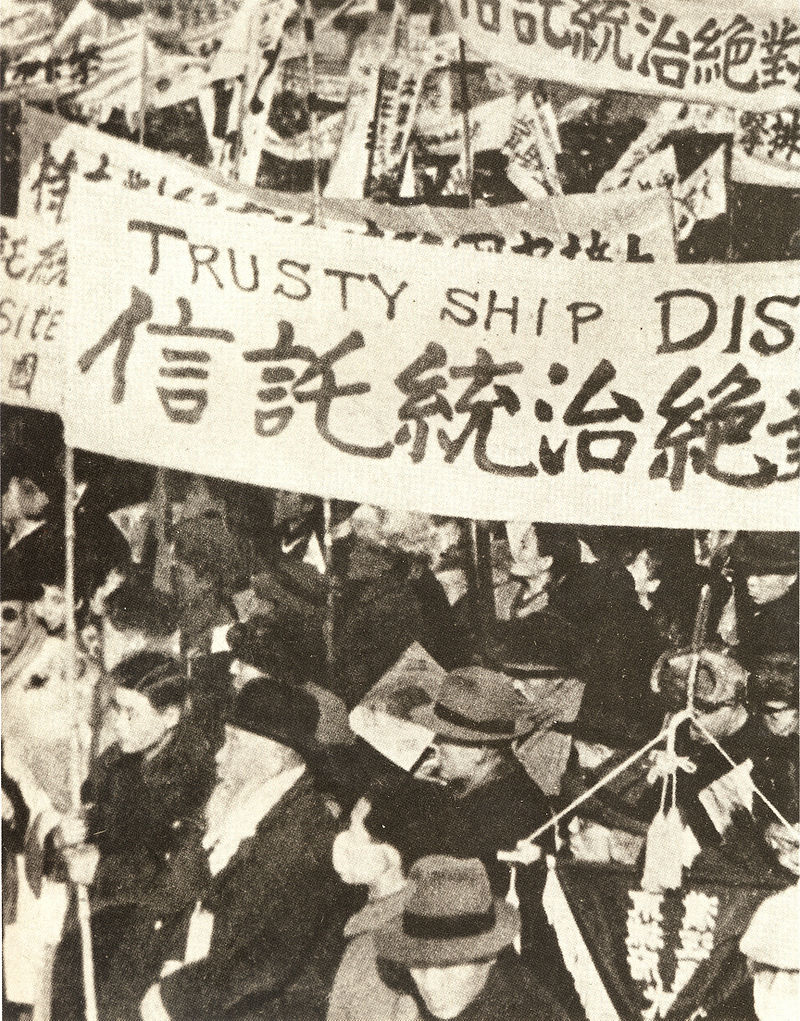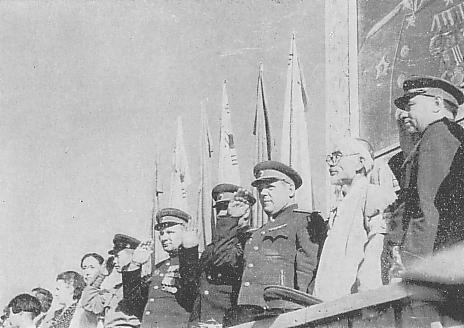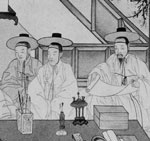Taekwondo 태권도Taekwondo Preschool
Joseon was a Korean state founded by Taejo Yi Seong-gye that lasted for approximately five centuries, from July 1392 to October 1897. It was founded following the aftermath of the overthrow of the Goryeo Dynasty in what is today the city of Kaesong. Early on, Korea was retitled and the capital was relocated to modern-day Seoul. View Joseon Era 조선 »

Korea Division: Post World War II
The division of Korea into South Korea and North Korea was the result of the 1945 Allied victory in World War II, ending the Empire of Japan's 35-year colonial rule of Korea by General Order No. 1.
South Korea
On September 7, 1945, General MacArthur announced that Lieutenant General John R. Hodge was to administer Korean affairs, and Hodge landed in Incheon with his troops the next day. The troops occupied Southern Korea and took over comfort stations, then the women in comfort stations became western princess.

The Provisional Government of the Republic of Korea sent a delegation with three interpreters, but he refused to meet with them. Thus, they refused to recognize the People's Republic of Korea or the Korean Provisional Government. In September 1946, South Korean citizens rose up against the Allied Military Government. The U.S. military has maintained a presence on the Korean Peninsula through to the present day.
The former President of the Provisional Government of the Republic of Korea, the government-in-exile in Shanghai, and ardent anti-communist Syngman Rhee, was considered an acceptable candidate to provisionally lead the country since he was considered friendly to the US, having traveled and studied stateside. Under Rhee, the southern government conducted a number of military campaigns against left-wing insurgents who took up arms against the government and persecuted other political opponents. Over the course of the next few years, between 30,000 and 100,000 people would lose their lives during the war against the left-wing insurgents.
In April, 1948, Jeju islanders rose up against South Korean officials, and South Korea sent troops to repress the rebellion. Tens of thousands of islanders were killed and by one estimate, 70% of the villages were burned by the South Korean troops. The uprising lasted until the end of the Korean War.
In August 1948, Syngman Rhee became the first president of South Korea. In October 1948, the Yeosu–Suncheon Rebellion took place, in which some regiments rejected the suppression of the Jeju uprising and rebelled against the government. In 1949, the Syngman Rhee government established the Bodo League in order to keep an eye on its political opponents. The majority of the Bodo League's members were innocent farmers and civilians who were forced into membership. The registered members or their families were executed at the beginning of the Korean War. On December 24, 1949, South Korean Army massacred Mungyeong citizens who were suspected communist sympathizers or their family and affixed blame to communists.
North Korea
Throughout August, Koreans organized the country into people's committee branches for the "Committee for the Preparation of Korean Independence" (CPKI, 조선건국준비위원회). The Soviet Army allowed for these committees to continue to function since they were friendly to the Soviet Union, but still established the Soviet Civil Authority to begin to centralize the independent committees. Further provisional committees were set up across the country putting Communists into key positions. In March 1946 land reform was instituted as the land from Japanese and collaborator land owners was divided and handed over to poor farmers. Kim Il-sung initiated a sweeping land reform program in 1946.

Organizing the many poor civilians and agricultural laborers under the people's committees a nationwide mass campaign broke the control of the old landed classes. Landlords were allowed to keep only the same amount of land as poor civilians who had once rented their land, thereby making for a far more equal distribution of land. The North Korean land reform was achieved in a less violent way than that of China or Vietnam. Official American sources stated, "From all accounts, the former village leaders were eliminated as a political force without resort to bloodshed, but extreme care was taken to preclude their return to power." This was very popular with the farmers, but caused many collaborators and former landowners to flee to the south where some of them obtained positions in the new South Korean government. According to the U.S. military government, 400,000 northern Koreans went south as refugees.
Key industries were nationalized. The economic situation was nearly as difficult in the north as it was in the south, as the Japanese had concentrated agriculture in the south and heavy industry in the north.
In February 1946 a provisional government called the Provisional People's Committee was formed under Kim Il-sung, who had spent the last years of the war training with Soviet troops in Manchuria. Conflicts and power struggles rose up at the top levels of government in Pyongyang as different aspirants maneuvered to gain positions of power in the new government. At the local levels, people's committees openly attacked collaborators and some landlords, confiscating much of their land and possessions. As a consequence many collaborators and others disappeared or were assassinated. Soviet forces departed in 1948.
Elections and UN Intervention
With mistrust growing rapidly between the formerly allied United States and Soviet Union, no agreement was reached on how to reconcile the competing provisional governments. The U.S. brought the problem before the United Nations in the fall of 1947. The Soviet Union opposed UN involvement.
The UN passed a resolution on November 14, 1947, declaring that free elections should be held, foreign troops should be withdrawn, and a UN commission for Korea, the United Nations Temporary Commission on Korea, should be created. The Soviet Union, although a member with veto powers, boycotted the voting and did not consider the resolution to be binding. In April 1948, a conference of organizations from the north and the south met in Pyongyang. This conference produced no results, and the Soviets boycotted the UN-supervised elections in the south. There was no UN supervision of elections in the north.
On May 10, 1948 the south held a general election. On August 15, the "Republic of Korea" formally took over power from the U.S. military. In the North, the "Democratic People's Republic of Korea" was declared on September 9, with Kim Il-sung as prime minister.

Korea ( 한국 )
Korea ( 한국 ) called Hanguk in South Korea and Chosŏn in North Korea, is an East Asian territory that is divided into two distinct sovereign states, North Korea and South Korea. Located on the Korean Peninsula, Korea is bordered by China to the northwest and Russia to the northeast. It is separated from Japan to the east by the Korea Strait and the Sea of Japan (East Sea). For more information View Korea ( 한국 ) »
RESOURCES
This article uses material from the Wikipedia article "Division of Korea", which is released under the Creative Commons Attribution-Share-Alike License 3.0.









